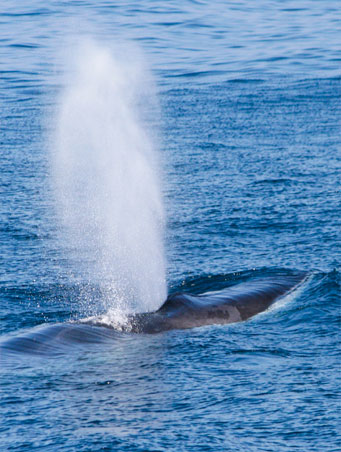Known to be the largest of all sea turtles, the leatherback is also one of the biggest reptiles on earth. It is easily recognisable by its distinctive smooth and soft carapace that seems as rubbery as leather, for which it is therefore named. On top of its carapace, the ridges make its body very hydrodynamic, allowing this deep diver to reach depths over 1,000 m for up to 85 minutes.
Leatherback turtles are huge oceanic animals, reaching remarkable lengths of up to 2 metres and weights of 600 kg.
They are highly migratory species, crossing the oceans several times between breeding and feeding grounds, undertaking the longest migrations. Their distribution is therefore wide, ranging from temperate to tropical waters in the Atlantic, Pacific and Indian Oceans.
No nesting site of leatherbacks has ever been reported in the Mediterranean Sea. However, although they are rarely sighted, their presence as visitors is regular in the basin. Individuals from the Atlantic Ocean presumably enter the Mediterranean Sea in search for food.
Sadly, once present in every ocean in the world, leatherback population is rapidly declining in many parts of the world due to human threats, such as by-catch, hunting, and collection of eggs for consumption. In the Pacific Ocean they are at risk of extinction.

The common bottlenose dolphin is most likely the best known of all cetaceans, figured in legends and being known since the ancient Greeks ...

The short-beaked common dolphin is a medium-sized dolphin, easily distinguishable by a very unique hourglass-like pattern on the side of ...

The striped dolphin is the most abundant dolphin species in the Mediterranean Sea. It is a small, active and energetic dolphin, usually s ...

Risso’s dolphins are large members of the Delphinidae family, presenting a distinctive coloration that can vary throughout their ...

The fin whale is the second longest animal in the world, after the blue whale, reaching a length of 23 m and weighting up to 50 tons. The ...

The sperm whale is easily recognisable by its massive heads which contains the spermaceti: the world’s most powerful natural sonar or ech ...